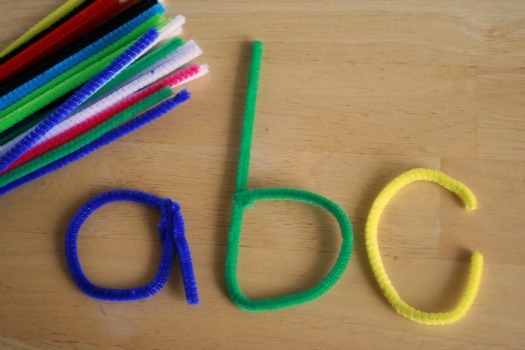Today
is about adaptations but before we
can talk about adaptations we need to know what constitutes as an adaptation.
An adaptation is a trait that has been naturally selected through mutations
that are heritable and must increase the organism’s fitness. An organism’s fitness is determined by its survival and reproduction
rates. In this natural selection lab, all of these components will be visually
displayed in a fun, interactive manner.

You
will need three identical, large bins; three colors of shredded paper; 3 colors
of pipe cleaners cut into small segments that match the shredded paper; 3 cups;
and a magnetic wand. Each bin will be designated with one primary color, A, B,
or C. Bin number 1 will consist of half of A’s shredded paper supply and a
quarter of B’s and C’s color supply. Bin number 2 will consist of half of B’s
shredded paper supply and a quarter of A’s and C’s color supply. Lastly, bin
number 3 will consist of half of C’s color supply and a quarter of A’s and B’s
color supply. Overall, the bins should have a color ratio of 2:1:1 with a
different predominant color in each bin. If the primary color is not
predominant, then adjust the color ration of shredded paper. These bins are now
the habitats for the experiment. The pipe cleaners should be cut into 1.5-2
inch lengths and separated into nine bags total with three bags of each color.
One bag of each color should be placed at each of the habitats so that all
three bins have all three different colors. These pipe cleaners are now the
prey of the paper habitats.

The
class will be separated in three different groups so one group will be at each
habitat. They will need to designate a timer,
a predator, a math wizard, and a habitat
manager. The predator will be given a cup to be its stomach for its
captured prey. The habitat manager is in charge of making sure the habitat
starts with the right number of prey and the correct amount of prey are added
after each round. The math wizard has the duty of figuring out how many prey
should be added after each round. The timer simply keeps track of time so that
the predator does not take more prey then it should. These roles should be
switched at each new habitat for fairness and fun. Once the roles have been
decided amongst the group, the predator must turn away from the habitat as the
habitat manager slightly hides 8 pipe cleaners of each color in the bin. Once
the habitat manager is satisfied with hiding the prey, the predator can turn
back towards the bin. The timer will tell the predator when to start and allow
the predator 20 seconds to hunt for prey. The predator must grab as many pipe
cleaners as they can, one at a time, and place it in their stomach (cup) before
time runs out. When 20 seconds is over, the predator must count how many prey
of each color they have in their stomach and inform the math wizard. The math wizard
will then fill out the worksheet for the first generation and compute how many
prey of each color need to be added to the habitat to signify reproduction. The
habitat manager will then add the number of prey to the bin without the
predator watching. Once the prey has been added and hidden, the predator may
turn around and begin hunting on the timer’s cue. This process will be repeated
so there are three rounds total to signify three generations. After three
generations at one habitat has been completed, the current group must use the
magnetic wand to fish out the rest of the remaining pipe cleaners so there are
no pipe cleaners left in the bin. Groups will then change habitats and switch
roles. They will repeat the process they performed at the first habitat and
record the results. If the class is well-behaved and focused, you can try to have
them complete all three habitats. My groups’ example experiment is below and is
a similar format to the worksheet that should be provided to each group.
Generation
1:
Primary
Habitat Color: A
|
Prey Color: A
|
Prey Color: B
|
Prey Color: B
|
Number in habitat to
start
|
8
|
8
|
8
|
Number prey caught in
hunt
|
2
|
1
|
0
|
Number of prey still in
habitat
|
8-2
= 6
|
8-1
= 7
|
8-0
= 8
|
New
offspring to be added to habitat (number from previous row)
|
6
|
7
|
8
|
Total
number prey in habitat to begin next generation (surviving prey+offspring)
|
6+6
= 12
|
7+7
= 14
|
8+8
= 16
|
Generation 2:
Primary
Habitat Color: A
|
Prey Color: A
|
Prey Color: B
|
Prey Color: B
|
Number in habitat to
start
|
12
|
14
|
16
|
Number prey caught in
hunt
|
1
|
7
|
4
|
Number of prey still in
habitat
|
12-1
= 11
|
14-7
= 7
|
16-4
= 12
|
New
offspring to be added to habitat (number from previous row)
|
11
|
7
|
12
|
Total
number prey in habitat to begin next generation (surviving prey+offspring)
|
11+11
= 22
|
7+7
= 14
|
12+12
= 24
|
Generation 3:
Primary
Habitat Color: A
|
Prey Color: A
|
Prey Color: B
|
Prey Color: B
|
Number in habitat to
start
|
22
|
14
|
24
|
Number prey caught in
hunt
|
4
|
5
|
8
|
Number of prey still in
habitat
|
22-4
= 18
|
14-5
= 9
|
24-8
= 16
|
New
offspring to be added to habitat (number from previous row)
|
18
|
9
|
16
|
Total
number prey in habitat to begin next generation (surviving prey+offspring)
|
18+18
= 36
|
9+9
= 18
|
16+16
= 32
|
As shown above, the prey color A in its matching colored
habitat was the hardest for the predator to find so its reproduction rate was
the highest. That means prey color A had the highest fitness in this particular habitat due to its increased survival
and reproduction rate. The color of the prey is heritable as shown by color A
prey only reproducing color A offspring, color B prey only reproducing color B
offspring, and color C prey only reproducing color C offspring. If this
experiment is done with the other habitats it is apparent that the color of the
prey compared to its habitat is important to survival. The adaption of color is
called cryptic coloration. The ability to camouflage, or blend in to its
habitat, is a great asset for survival. This visual representation demonstrates
the advantage of adaptations as well as the qualifications to be considered an
adaptation.
Credit to Dr. Alec Lindsay for the lab

Credit to Dr. Alec Lindsay for the lab

No comments:
Post a Comment